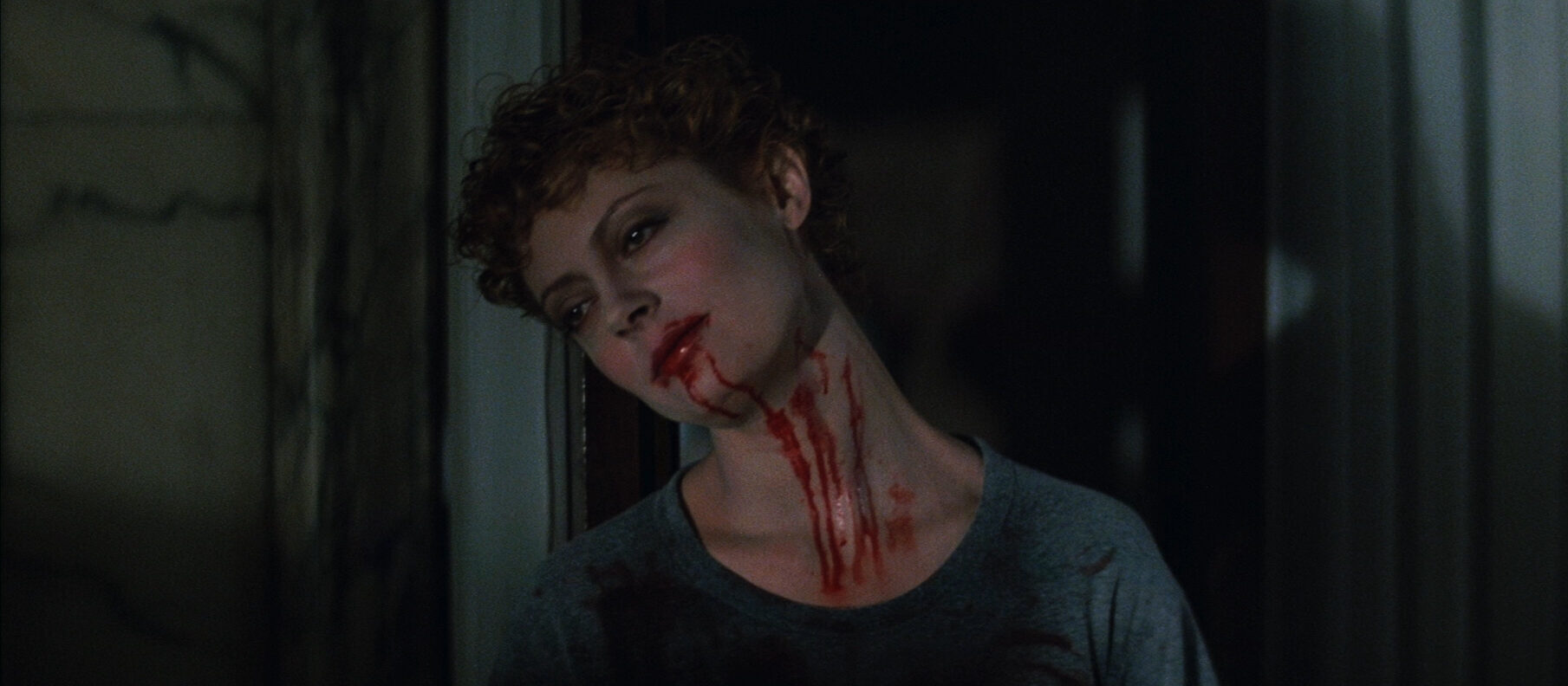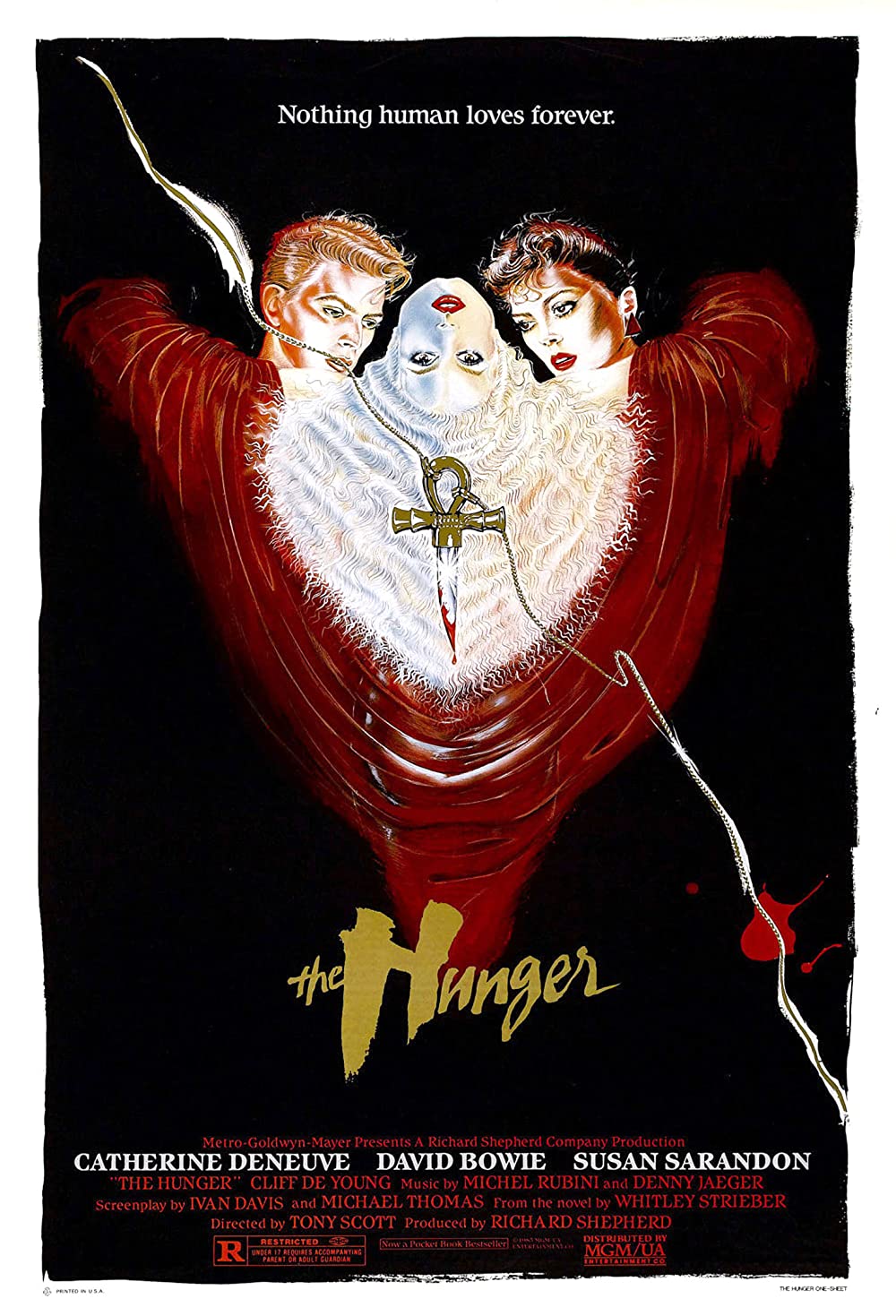

“There is no release, my darling. No rest. No letting go.”
Following in his brother’s footsteps, Tony Scott transitioned from commercials to feature films with The Hunger, an erotic audiovisual assault of a revisionist vampire movie that describes the plight of a rapidly aging classical cellist (David Bowie) who mistakes a promise of eternal life for one of eternal youth. Soon to join the collection of immortal vegetables in his ageless lover’s (Catherine Deneuve) attic, he seeks the counsel of a gerontologist (Susan Sarandon) who studies rapid aging in monkeys. She initially dismisses his claims, suspecting hypochondriac tendencies, but his visible aging while sitting in her waiting room (Dick Smith’s aging makeup on Bowie is top notch) prompts the doctor to seek him out, whereupon she becomes entangled in the vampire couple’s warped affairs. Also factoring in are a music student and potential lover (Beth Ehlers), two other scientists (Cliff De Young, Rufus Collins), and a police official (Dan Hedaya).
But narrative is not the film’s selling point. Indeed, one almost gets the sense that Scott included it as a necessary evil, that he prefers sound and vision to narrative and character. In any case, viewers should certainly seek it out for its display of the director’s burgeoning style of image-driven storytelling. Heavy on mood and thematic imagery, it generates considerable momentum with its breakneck opening sequence, which flits amongst lustful sex, vampire bloodsucking, gruesome primate violence, and a music video chic performance of ‘Bela Lugosi’s Dead’ by gothic rock band Bauhaus.
This jarring barrage, chopped up, arrhythmic, and out of sequence, is used to wordlessly depict our protagonists’ seduction and slaughter of a couple of club swingers, but also to dial in the atmosphere. As the film moves on, Scott will sporadically cut to an impressionistic flashback, overlay dialogue with out-of-sync footage, or insert a non-diegetic dream-image. When he does settle down, however briefly, he still makes use of parallel editing and fills his shots with billowing curtains, smoky haze, deep shadows, and an abundance of doves.
Upon release the film was criticized for a perceived style-over-substance approach to its storytelling. But while few would dispute that The Hunger is primarily an exercise in style, there is certainly some meat on its bones and maybe even a little gristle to stick between the teeth. It’s been read through the lenses of aging, sexual appetites, grooming, and the AIDS epidemic, and many have drawn a thematic link between The Hunger and Ridley Scott’s Blade Runner due to their similar examinations of mortality.
Still, it all does start to feel a bit shallow once the tricks start to repeat. It ends up stuck somewhere between a visually dynamic horror film and an impressionistic arthouse piece flavored with the macabre, never quite jelling in a totally satisfying way and feeling less like a script-to-screen picture than something forged in the editing room. But as a collection of individual sequences, it is quite invigorating.